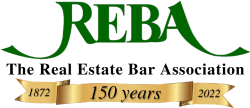
|
Introduction:
Tightening liquidity and increased borrowing costs are changing the
global financial landscape. This alert will explore the implications of these shifts on debt restructurings and loan workouts, with a particular focus on the commercial real estate sector.
Credit tightening in both the US and EU is evident as banks, especially smaller ones, grapple with the challenges posed by a higher interest rate environment and asset pressure. This has led to a slowdown in US bank lending and an expected further tightening of lending standards. The current reduction in credit supply, equating to 25 to 100 basis points of policy tightening, suggests a Federal Funds rate of 5.25-6% by the end of Q1 2023. Financial conditions are likely to continue tightening, with real estate lending being particularly vulnerable due to the stress on smaller banks.
The shifting landscape has also led to changes in the banking sector, with bank deposits becoming less attractive compared to money market funds. This shift, coupled with a decrease in the quality of asset collateral due to higher rates and slower growth, is impacting smaller banks significantly, especially those heavily involved in real estate lending.
Although the current tightening falls short of a full-fledged credit crunch, it signals a cautious approach by policymakers who are monitoring the situation closely. Should small bank stress spread more broadly, sharply reducing credit availability, it could substantially impact US GDP growth in 2024. This scenario might lead to an earlier policy rate cut by the Federal Reserve. The situation, while challenging, especially for the real estate sector, remains under close surveillance by central banks to prevent a severe economic downturn.
This shift in lending behavior can be partly attributed to the failures of notable banks such as Silicon Valley Bank, Signature Bank, and First Republic early in 2023. These events have exerted a significant impact on the lending practices of other regional and local banks, contributing to the sharp decline in their commercial mortgage originations.
Meanwhile, the banking industry, particularly regional and midsize banks, is facing increased funding costs due to the pace and steepness of the current rate cycles. This has significantly heightened the cost of interest-bearing deposits, squeezing the margins of these institutions.
Headwinds in the Capital Markets:
Capital markets are facing headwinds, especially in the real estate sector, exacerbated by the stress on small banks. The contraction in lending, particularly in the real estate domain, is indicative of a broader tightening in financial conditions, which could have ripple effects across various sectors.
The banking industry, benefiting from higher interest rates, saw an increase in net interest income post COVID. However, this trend has led to heightened funding costs and squeezed margins, particularly affecting regional and midsize banks due to higher deposit costs.
Despite potential interest rate drops, banks globally may struggle to reduce these high deposit costs because of customer expectations and competitive pressures. European banks might decrease deposit costs more effectively due to less competition from money market funds compared to their U.S. counterparts.
Loan growth is expected to be modest, influenced by
macroeconomic conditions and high borrowing costs. Banks are likely to maintain
restrictive credit lending policies, as indicated by recent surveys from the
Federal Reserve and the ECB, pointing to tightened credit standards due to
economic uncertainties and potential deterioration in collateral values and
credit quality.
The commercial real estate (CRE) sector in the U.S. is particularly stressed, affecting regional and midsize banks with significant exposures to office spaces. High uncertainty, inflated property prices, and debt repayment concerns have led to increased selectivity in new CRE originations and refinancing. CRE loan delinquencies are on the rise, signaling potential challenges in this sector. In contrast, the European CRE market appears more resilient, with larger, well-capitalized banks handling most CRE loans. The APAC region is expected to have a steadier trajectory, supported by demand from the hospitality sector and growth in multifamily residential mortgages.
Climate risks are also influencing loan demand and credit availability. Banks are tightening credit standards for loans to firms with higher climate risks, while easing conditions for green firms and those transitioning to decarbonization. This shift in credit disbursement policies is poised to significantly impact banking strategies.
Overall, the combination of higher deposit costs, variable policy rates, and constrained loan growth is impacting banks’ ability to generate strong net interest margins. This environment calls for banks to reassess their deposit costs and deployment strategies to navigate these challenging times effectively.
The State of Corporate Credit Quality and Bank Lending Policies.
The market is also witnessing a noticeable deterioration in corporate credit quality. This trend is primarily driven by persistently high official rates, which are likely to remain elevated as inflation in the eurozone may only return to its 2% target by late 2025. This situation will continue to impact growth negatively and maintain tight financing conditions, exacerbating the focus on aspects like cash flows, debt service, and sustainability.
Several risks are at play, including the potential for a stagnating European economy teetering on the brink of a shallow recession and the consequent exposure of financial vulnerabilities. This could see the default rate gradually inching toward 3.75% in upcoming quarters.
Additionally, geopolitical tensions, such as Russia’s invasion of Ukraine and heightened trade tensions, especially involving China, pose significant threats. These factors, along with rising refinancing costs and lower valuations, are putting substantial pressure on real estate credit quality.
For corporates, especially speculative-grade issuers, the trend in credit quality is turning negative as financing conditions tighten. The real estate sector remains particularly vulnerable. Although European banks are likely to experience some asset quality deterioration, credit losses are expected to only normalize. The ratings on speculative-grade companies have shown an increased negative outlook bias since summer 2022, with marked shifts in net outlook bias at the sector level, notably in real estate and technology sectors.
The CRE market is showing signs of strain, with a notable increase in loan delinquencies. This trend is concerning, given the CRE market's size and its role in the broader financial system. Increased regulatory scrutiny on banks with high CRE exposure adds another layer of complexity to this issue. For instance, the commercial real estate loan delinquency rate at U.S. banks climbed to 0.77% at the end of March 2023, the highest since the third quarter of 2021. This increase is accompanied by a growth in total CRE loans to $2.436 trillion as of March 31, 2023.
The delinquency rate on nonowner-occupied nonresidential property loans has been on an upward trend for three consecutive quarters. This has led to increased scrutiny on loans, particularly those tied to office buildings. Banks, in response, are exercising heightened caution over CRE loans, potentially escalating stress on borrowers. This situation is further complicated by the growing number of U.S. banks exceeding regulatory guidance on CRE loan concentration, which has surged by over 30% compared to the previous year. These dynamics underline the need for careful monitoring and potential policy intervention to navigate the challenges in the CRE market.
Recommendations and Strategies for Debt Servicing:
For businesses struggling with debt servicing, a proactive approach is key. This includes not only identifying current challenges but also anticipating potential future challenges. A successful strategy is dependent on several critical elements:
First, central to any effective debt servicing strategy is the establishment of effective communication and collaboration between borrowers and lenders. This relationship is the basis for exploring and negotiating viable solutions. When borrowers and lenders engage in a dialogue grounded in mutual understanding, it lays the groundwork for creative problem-solving. In this context, borrowers should be prepared to present a clear and honest picture of their financial situation, fostering an environment conducive to effective negotiation and collaborative solution-finding.
Further, in navigating the complexities of debt restructuring, the role of professional legal and financial counsel is essential. These experts bring a wealth of knowledge and expertise, guiding both borrowers and lenders through the complexities of restructuring agreements while ensuring that solutions are viable and mutually agreeable.
Businesses should also consider all available restructuring options. The key is to align these options with the company’s current financial health, making sure that the restructured debt is manageable and sustainable.
Finally, businesses should build a support network of other business owners, industry experts, and legal and financial advisors who can provide valuable insights and support, offering practical advice based on various scenarios.
A partner in the business transactions practice group at prince Lobel Tye LLP. Max Riffin primarily focuses on representing businesses, investment funds, and investment advisers, helping them navigate complex transactional and regulatory matters. His email address is mriffin@princelobel.com.





